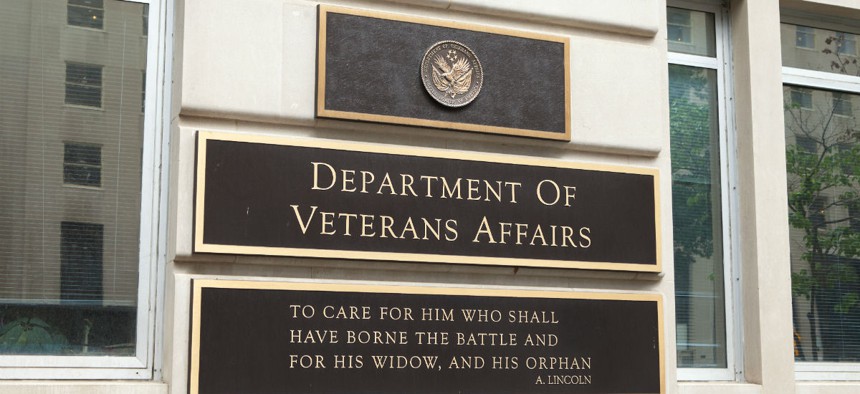The Number of Disabled Post-9/11 Vets With VA Health Care Is Growing Despite Wait List Scandal
Survey shows that 71 percent of injured Iraq and Afghanistan vets have health care through the department, up 11 percent over the last two years.
The percentage of disabled post-9/11 vets with health insurance through the Veterans Affairs Department has increased 11 percent over the last few years, despite the department’s well-publicized management problems and the 2014 patient wait-times scandal, according to a new survey.
Seventy-one percent of injured Iraq and Afghanistan veterans said they had VA health care coverage in 2016, compared to 66 percent in 2015, and 59 percent in 2014, the latest survey from the Wounded Warrior Project found. Of those respondents, or “alumni” as the WPP calls them, 68 percent used VA health care as their primary health care provider. The percentage of alumni with two or more types of health care insurance is also growing, jumping from 45 percent in 2015 to 48 percent in 2016. The 2014 Veterans’ Access, Choice, and Accountability Act expanded health insurance options for many vets, allowing them to use private health care providers in cases where VA could not meet their needs.
The 2016 WPP survey, the seventh such analysis the organization has conducted on post- 9/11 disabled vets, includes information on the population’s demographics, military experiences, physical and mental well-being, as well as education and employment data. More than 31,000 vets participated in the 2016 survey, which was sent to more than 79,000 WPP alumni, making it “one of the largest annual collections of data about this generation of wounded veterans,” the organization said in a statement. The 2016 response rate was 40 percent, up slightly from a 39 percent response rate in 2015.
“This survey helps us determine the needs of post-9/11 wounded warriors,” said Mike Linnington, WPP chief executive officer. “It also helps inform where we can work with other veterans service organizations and the Department of Veterans Affairs to help provide services to warriors in the communities where they live.” WPP took some heat earlier this year for lavish spending on conferences and meetings, and the board fired two top executives in March.
According to the survey, the percentage of WPP alumni receiving VA disability benefits also has continued to increase, from 72 percent in 2014 to 85 percent in 2016; those receiving a disability rating of 80 percent or higher from the VA also has risen from 43 percent in 2014 to 54 percent in 2016. Over the same time period, the percentage of WPP alumni reporting that they had a VA claim pending or on appeal fell from 10 percent in 2014 to 5 percent in 2016.
The most common injuries and health problems respondents reported were: post-traumatic stress disorder (77 percent); sleep issues (76 percent); back, neck or shoulder problems (72 percent); and depression (70 percent).
In more good news for the VA, 69 percent of 2016 WPP survey respondents said VA medical centers were their top resource for addressing their mental health care needs, compared to 52 percent who said talking to another vet and 50 percent who cited prescription medication.
Still, disabled vets who participated in the survey reported difficulties accessing physical and mental health care through the VA and outside providers. Thirty-five percent of respondents reported mental health care access problems, with the most common reason cited being “personal schedules that conflicted with the hours of operation of VA health care.” The fourth most commonly-cited reason was “difficulty in scheduling appointments” (32 percent). For those seeking physical health care, 40 percent of those with VA and other types of health care said they’d experienced problems scheduling appointments, the top reason in that category, while 45 percent of those respondents with VA as their primary health care provider cited difficulties with scheduling appointments.
Thirty-seven percent of those using VA as their primary health provider cited a lack of availability in VA specialty clinics (compared to 31 percent of all respondents), while 37 percent of respondents using VA as their primary health care said the department’s requirements made it difficult to get referrals for necessary specialty treatment for physical problems, compared to 31 percent for all respondents with those issues.
Veterans and veteran advocates have criticized VA for its inefficiencies and mismanagement over the years, but consistently give high marks to the department’s health care and health care providers.
NEXT STORY: Making Sense of the Medicare Mess








